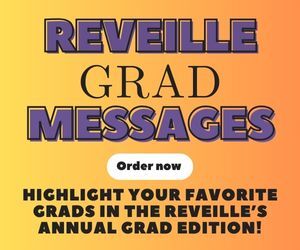Oceanography students peered over the side of the swimming pool as their classmates attempted to steer a complex and expensive robot through the water Tuesday.
Intrigued by the new machine, the students smiled as they watched each person attempt to control the contraption.
Associate Professors Mark Benfield and Malinda Sutor treated their Oceanography 2008 class, Introduction to Marine Life Processes, to an interesting end-of-the-year activity.
Students in the marine life class raced to retrieve plants from the bottom of the University Recreation swimming pool using a complex underwater exploration instrument, the VideoRay Remotely Operated Vehicle.
“It’s something really fun to let them do at the end of the year,” Benfield said.
The $65,000 VideoRay ROV is the property of the Coastal Fisheries Institute in the Department of Oceanography and Coastal Sciences. The institute has two more ROVs that they use for exploration and study.
Each of the students test-drove the VideoRay and tried to steer it through a series of underwater hoops. They also tried to retrieve an ocean plant sitting on the pool floor.
The machine is controlled from the surface by an operator, who can see the underwater environment through the VideoRay camera on a screen.
Though scientists use similar machines all over the world, the University’s VideoRay is equipped with sonar, a tracking system and an arm to retrieve objects, Benfield said.
The same VideoRay model was used to explore the U.S.S. Arizona, which sunk at Pearl Harbor in Hawaii in 1941 during an attack by Japanese forces.
Benfield said he reserves part of the University Recreation swimming pool at the end of every semester for his students to participate in this activity.
Dillon Soderstrom, a forestry sophomore, was one of the first to test the VideoRay.
“It’s harder than it looks,” he said.
Soderstrom said he hopes to explore the ocean one day and plans to minor in oceanography.
Marianne Alford, an environmental management systems sophomore, said she did not plan to pursue a career in oceanography, but that she found the prospect of exploring the ocean interesting.
“It would be really neat to use this kind of instrument all the time,” Alford said. “It must be awesome to do this for a living.”
Students test-drive underwater explorer tool
April 27, 2005





